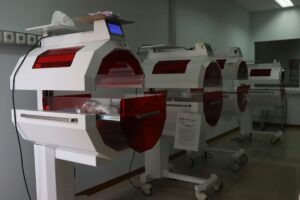
So you’ve researched, developed, and tested your medical device, and now it’s time to introduce it to the world. But getting it into the hands of healthcare professionals and patients requires more than just a great product. You need a solid marketing strategy that cuts through the noise, speaks directly to your target audience, and highlights what makes your device stand out. It’s about understanding the unique landscape of the medical industry, where trust, evidence, and value are key.
Let’s dive into how you can effectively market your medical device in a way that resonates, builds credibility, and drives adoption.

There was a time when “marketing” was a catchall phrase for any type of promoting effort to attract an audience. If you needed to get the word out about a service or a product, whether it was a clothing brand, a new restaurant, or even a medical device, the approach was often the same—blanket advertising with the hope that something would stick. But times have changed, and so has the art and science of marketing, especially in the specialized world of medical devices.
Today, medical device marketing strategies go far beyond just spreading the word. It’s a targeted, data-driven approach that considers the unique challenges of the healthcare industry. This includes understanding the complex needs of medical professionals, the regulatory environment, and the critical importance of evidence-based messaging. Your strategy needs to address these factors while effectively communicating the value and benefits of your device to the right audience—whether that’s clinicians, hospital administrators, or patients.
Medical device marketing is a highly competitive and regulated market, so a well-crafted marketing strategy isn’t just an option; it’s a necessity for medical device companies. Ultimately, it’s what’s going to differentiate a product that merely exists from one that becomes indispensable.
The goal of creating a medical device marketing strategy is getting your product seen, understood, and trusted by the people who matter. Here’s a beginner’s guide to help you navigate the process.
Your brand is the first impression people get of your company and your product, and it’s about a lot more than having a catchy name or a sleek logo; it’s what your company stands for and how that’s reflected in your medical device. So, to define your brand and make sure your marketing materials are relevant and consistent, start by asking yourself: What makes my device different from others on the market? What problem does it solve, and how does it improve patient care or streamline healthcare operations?
Your unique value proposition should be at the core of your brand. This is what sets you apart in a crowded marketplace. Whether it’s a breakthrough technology, an innovative design, or unparalleled ease of use, make sure your USP is clear and consistent across all your marketing materials.
Marketing a medical device effectively means knowing exactly who you’re talking to. This means that you should take the time to understand the roles, challenges, and decision-making processes of your target audience. Are you targeting surgeons, general practitioners, or hospital purchasing managers? Each group will have different priorities and concerns.
For instance, a surgeon might care most about the precision and reliability of your device, while a purchasing manager might be more interested in cost-effectiveness and regulatory compliance. Patients, on the other hand, will be concerned with how the device improves their quality of life or recovery time. Invest time and resources on mapping out these personas and tailor your messaging to address their specific needs and pain points. The more you know about your audience, the more effectively you can communicate the value of your device.
Marketing doesn’t come cheap, but it doesn’t have to break the bank either, so, before you start actually marketing your medical devices, set a realistic budget to make the most of your resources. Start by outlining your overall marketing goals—whether it’s brand awareness, lead generation, or direct sales—and then allocate funds accordingly.
Consider all the costs involved, from digital marketing campaigns and content creation to attending industry events and regulatory approvals. Don’t forget to factor in the cost of ongoing activities like social media management, search engine optimization (SEO), and content updates. Your budget should be flexible enough to allow for adjustments based on what’s working and what isn’t.
Before you launch any marketing efforts, you need to have a thorough understanding of the market landscape. Conducting market research will help you identify opportunities, understand your competition and target audience, and uncover potential challenges. This means you should be gathering data—on your competitors, industry trends, customer needs, and regulatory requirements.
Use this research to validate your assumptions about the market and refine your marketing strategy. Identify gaps in the market that your device can fill, and look at what your competitors are doing right—and wrong. This will help you position your product effectively and anticipate any hurdles that could affect its success.
Not all marketing channels are created equal, especially when it comes to medical devices. Depending on your target audience and budget, you’ll need to decide which channels will be most effective in reaching your goals. Digital marketing, including search engine optimization (SEO), content marketing, and social media platforms, is crucial for building awareness and engaging with your audience.
However, traditional methods like trade shows, industry publications, and direct mail can also play a vital role, particularly when targeting healthcare professionals who value face-to-face interactions and detailed product information. Choose a mix of channels that allows you to reach your audience where they’re most active, whether that’s online or offline.
Even the best medical devices are just gadgets sitting on a shelf if they don’t have the necessary regulatory approvals. In the medical field, getting the green light from regulatory bodies like the FDA is a critical step that legitimizes your product and ensures it meets the rigorous safety and efficacy standards required in healthcare.
Without these approvals, your device can’t be sold or used in many markets, and no amount of marketing will change that. The process can be complex and time-consuming, involving detailed documentation, clinical trials, and back-and-forth with regulators. But it’s non-negotiable. Obtaining regulatory approval should be woven into your marketing strategy from the get-go. Highlight these certifications in your marketing materials and use them as a badge of trust and a powerful signal to healthcare professionals and patients that your device is not just innovative, but also safe and reliable.
Outcomes are the name of the game when it comes to medical device marketing. An outcome-based message focuses on the benefits your medical device provides, not just the technical specifications. How does your device improve patient outcomes? How does it make healthcare delivery more efficient or cost-effective?
Craft a message that clearly conveys these benefits to your audience. Use case studies, testimonials, and data to back up your claims. This is your opportunity to show your device’s real-world impact, so use it wisely. Your message should be clear, compelling, and focused on what matters most to your target audience.
You need to track measurable benchmarks to know if your medical device marketing efforts are paying off. This could include metrics like lead generation, conversion rates, website traffic, and social media engagement. Set clear goals for each of your marketing activities and use tools like Google Analytics, CRM systems, and social media insights to track your progress.
Regularly review these metrics to understand what’s working and where there’s room for improvement. This will help you make informed decisions and optimize your strategy over time.
Marketing isn’t a one-and-done effort. As you track your benchmarks, be prepared to adjust your strategy based on what you learn. Maybe a particular channel isn’t delivering the results you expected, or perhaps a new opportunity arises that you hadn’t considered.
Stay flexible and be willing to pivot when necessary. The key to successful medical device marketing is continuous improvement. So, keep refining your approach, experimenting with new tactics, and learning from your results. Over time, this cycle of tracking, adjusting, and repeating will help you fine-tune your strategy and achieve your marketing goals.
If you’re looking for information on how to market medical devices, it means you understand the importance of not just having a great product, but also making sure it gets the attention it deserves. In a competitive and highly regulated medical device industry, a solid medical devices marketing strategy and a knowledgeable marketing team are key to standing out and reaching those who need your device the most.
We know marketing medical devices can get complicated, but you don’t have to do it alone. We’re here to help you navigate the ins and outs of medical device marketing, so you can focus on what you do best—innovating and improving lives. Ready to get started? Let’s chat and see how we can make your product a success.